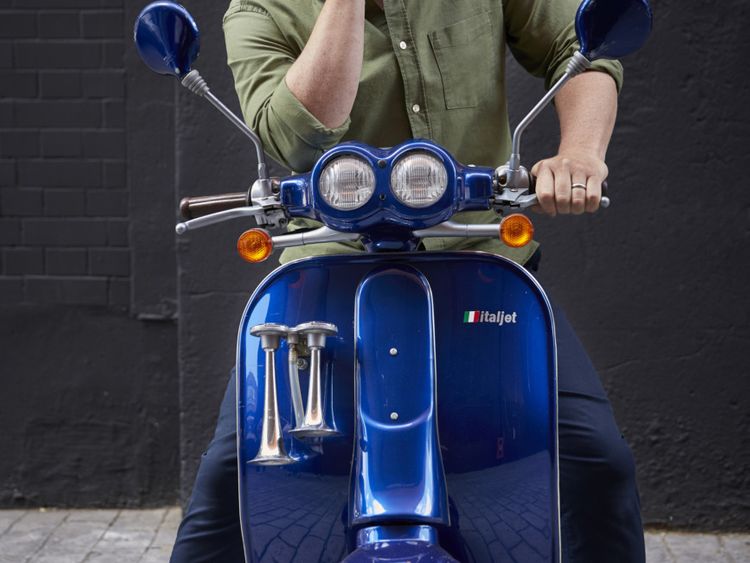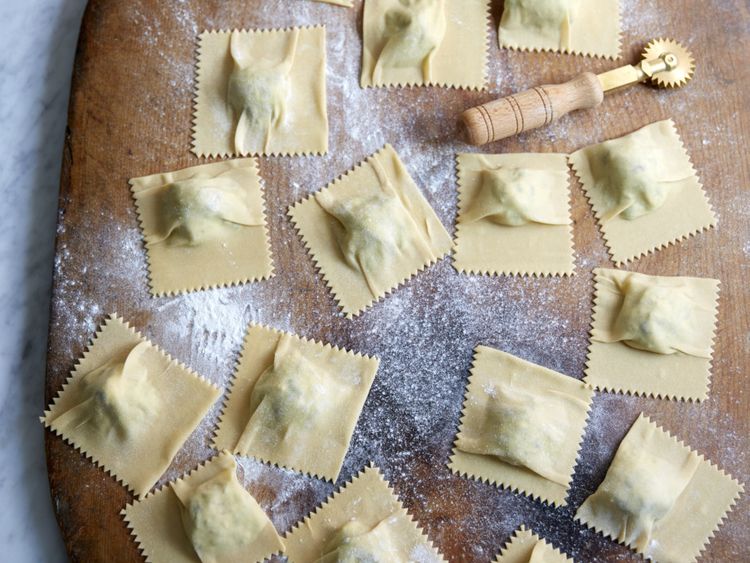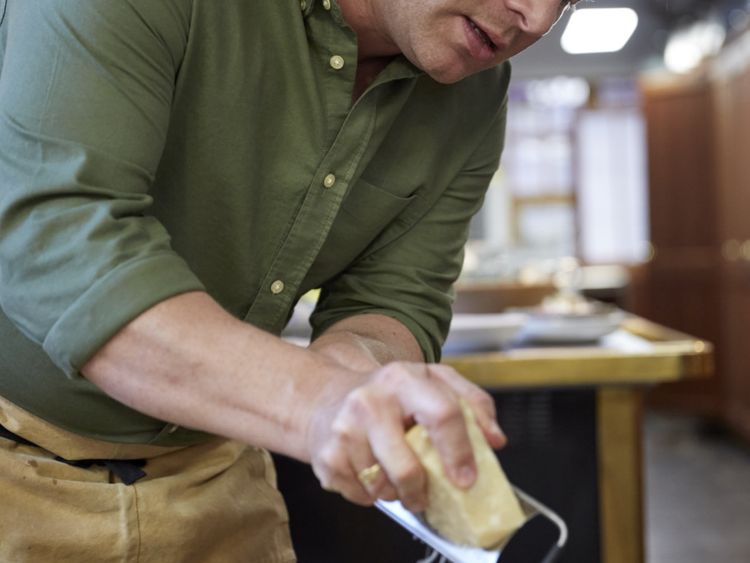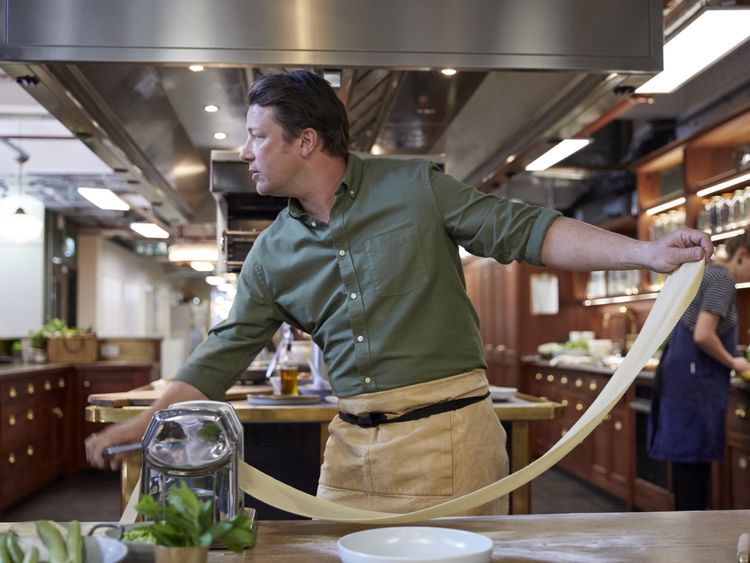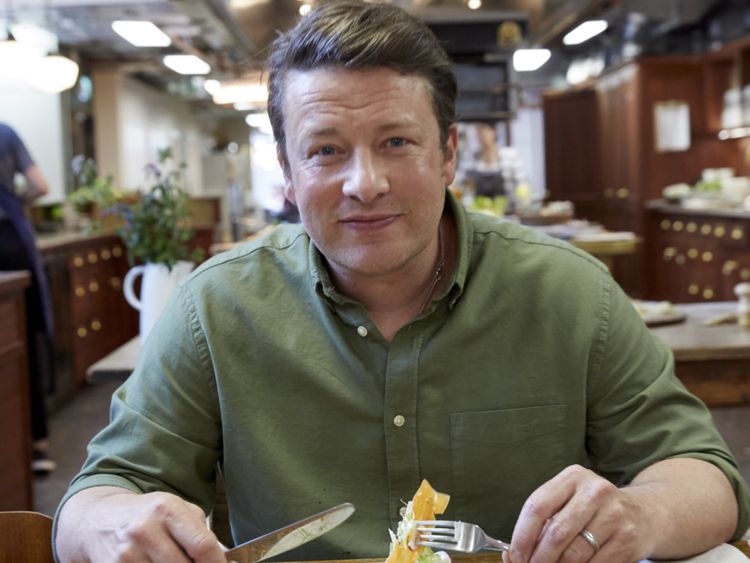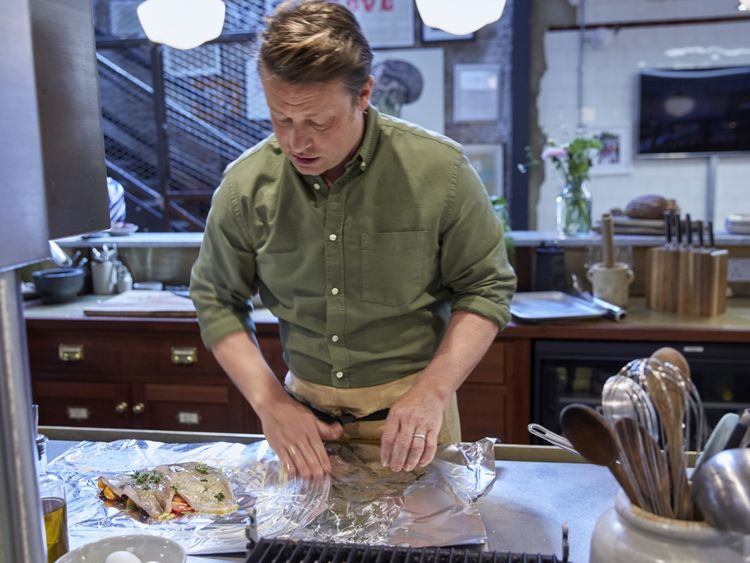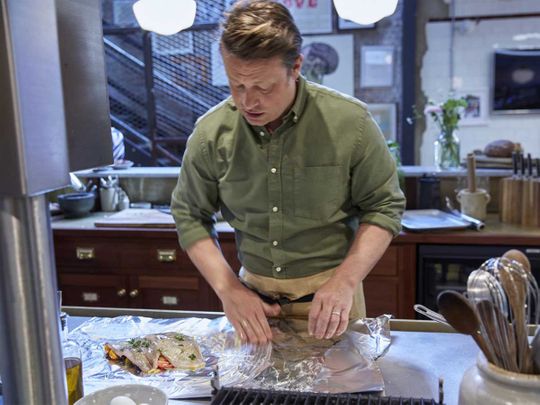
LONDON - Just before lunch on a recent Monday, Jamie Oliver wrapped an apron around his dad bod and started mashing mint and broad beans with a mortar and pestle, which has long been his favorite kitchen tool.
That adorable mop of hair he had 20 years ago is cropped now. At 44, Oliver comes off more like a pleasant, world-weary high school teacher.
And are those bags under his blue eyes?
“Sorry,” he said as he seasoned a fillet of Dover sole. “I’m a bit tired.”
The day started before 6 a.m. He dropped his children at school, then made his way to the refurbished North London warehouse that serves as his headquarters. After feeding a reporter lunch, he had to meet top officials from Liverpool, Manchester, Birmingham and London who were coming by the office to hammer out a plan to halve childhood obesity rates by 2030.
It didn’t help that he and his wife, Juliette, who goes by Jools, had exhausted themselves over the weekend moving into a $7.2 million 16th-century Tudor mansion not far from his parents’ in Essex. (They’re keeping the eight-bedroom North London town house.)
Moving is moving, especially with five children, including a feverish 3-year-old who spent the night “jumping around me like a rattlesnake,” Oliver said.
It wasn’t just a bad night’s sleep, a new house and a packed day that weighed on him. “I have probably been pushed to the edge of my capacity over the last four years,” he said.
THE BIG POTHOLE IN THE ROAD TO SUCCESS
In May, the Jamie Oliver Restaurant Group went into administration, a form of bankruptcy protection. The company, according to some accounts, owed creditors nearly 83 million pounds (about $100 million). Oliver said he tried his hardest to keep the business alive. But after closing some restaurants, injecting the equivalent of more than $15 million of his own money into the company and searching for a new investor, he gave up. In all, he shuttered or sold 25 restaurants, putting more than 1,000 people out of work.
Closing his first restaurant, the fashionable Fifteen in London, hurt the most. He had opened it in 2002 to train unemployed young people, many from difficult backgrounds, how to prepare tasting menus, make fresh pasta and run a proper dining room.
“That was the hardest thing I’ve ever had to do,” he said of the closing. “Just terrible. Awful.”
Oliver is, by most accounts, an optimist and, by his own account, what the British call a grafter - someone who just puts his head down and works, whatever the circumstance. That’s what has gotten him this far.
“I always graft it,” he said. “I put the effort in.”
LAMB, LIMES AND LOVE OF COOKING
He was a lousy student, but he knew his way around a kitchen, so he went to culinary school. He was a sous-chef at the River CafE in London when a BBC crew showed up to shoot a documentary. A smart producer saw how much the camera loved him.
“The Naked Chef” debuted in 1999 on BBC Two in Britain, and a year later on the Food Network in the United States. The camera work was shaky, and his style kinetic. Oliver froze up when speaking directly to the camera, so producers hung just off to the side and asked him questions.
By current digital standards, the show looks like something your brother the aspirational cook might shoot on his iPhone. But back then, it felt fresh, unscripted and cool. Oliver whipped around town on a motor scooter (which now sits in front of his headquarters) and slid down a spiral banister to let friends into his East End flat to help him cook.
He stuck his fingers into limes and lamb, and tossed every salad with his hands. He ushered a generation of young men into the kitchen, and taught them expressions like pukka (excellent) and lovely jubbly (also excellent).
Oliver secured an endorsement deal with Sainsbury’s, the second-largest supermarket chain in Britain, that would last 11 years and earn him close to $12 million. He wrote a bestselling cookbook. It was a lot for someone in his early 20s.
In 2008, he opened his first Jamie’s Italian restaurant with help from his mentor, Italian chef Gennaro Contaldo.
He started other chains, including Barbecoa, a pair of upscale steak and barbecue restaurants, in partnership with American chef Adam Perry Lang. At his peak, Oliver served 7.5 million meals a year and employed 4,500 people.
BE BENDY LIKE WELL COOKED PASTA It’s rarely one thing that brings a big enterprise down, and Oliver was battling several dragons at once. Taxes and the cost of ingredients he favored went up. So did rent, especially in fast-gentrifying neighborhoods. But he kept expanding, sometimes into neighborhoods without enough traffic.
Casual dining had become a lucrative draw for investors, and the market flooded with competitors. People started using delivery apps instead of eating out. After Britain voted to leave the European Union in 2016, the value of the pound fell. Retail spending plummeted. Critics began to complain about his restaurants’ food and service.
Things were no longer looking so pukka.
“If you’re not bendy like this pasta, then you break,” he said as he rolled out sheets for the ravioli he was stuffing for lunch. “And that’s what happened.”
Or, perhaps, he simply is not as good at business as he is at cooking and campaigning to help children eat healthier.
“Probably I was too trusting, which is one of my problems and also one of my benefits,” said Oliver, who estimated that he mishandles about 40% of his business ventures.
NO ONE HAS INVENTED NOTHING
In many ways, Oliver is relieved to be out of the restaurant business. His empire is smaller now, with about 120 employees. He spends most of his day doing the things he loves: cooking, talking about cooking, producing content about cooking and trying to make the world a healthier place to eat.
Oliver’s other ventures still make plenty of money. He has sold a lifetime total of 27 million pieces of Tefal cookware, and it’s easy to find his kitchen gadgets on Amazon. He recently signed a deal to become the health ambassador for Tesco, Britain’s largest grocery chain.
He mostly stays off Twitter - “it’s not a platform that makes me a happier person” - but he crushes Instagram, where he has 7.3 million followers. His YouTube channel, Jamie Oliver’s Food Tube, has 4.4 million subscribers. His average monthly social media reach is more than 30 million followers, and his global TV audience is 67 million, said Saskia Wirth, head of communications for the Jamie Oliver Group.
Books, however, remain the engine of the Oliver machine: He has sold more than 45 million of them - $7.4 million worth just last year, according to Nielsen Book Research - and is the country’s best-selling nonfiction author. For a time, only J.K. Rowling outsold him.
He can be just as riled by people who accuse him of cultural appropriation for the way he adapts recipes. He has taken flak from Spaniards for putting chorizo in paella; from Jamaicans for spicing microwaveable, packaged rice with ginger and jalapenos and calling it Punchy Jerk Rice; and from West Africans for using parsley and a lemon wedge in jollof.
“I like parsley, and if I want to put it in my jollof, I will,” he said. “No one’s invented nothing unless they’ve invented sun and rain, and they ain’t.”
Dishes evolve, impacted by trade, war, famine and a hundred other forces, he said.
LOVE IS FOREVER
Through all the turmoil, his marriage has stayed solid, he said. The couple plan to renew their vows on their 20th anniversary next June. Oliver still wears the necklace his wife gave him early in their relationship that reads, “I love you always,” and he writes her love notes on paper towels.
She is pushing for a sixth child, although he’s not so sure. Not that he doesn’t love being a father. He calls himself “an exceptional under-11-year-old dad” but perhaps only an “above average teenager dad.”
“Apparently, I’m a bit barky,” he said.
He just wants people to be able to eat better, no matter what their economic situation is. And who better to take on such an impossible task?
“You don’t want someone who’s had success after success after success,” he said. “You want someone like me.”
The New York Times News Service


